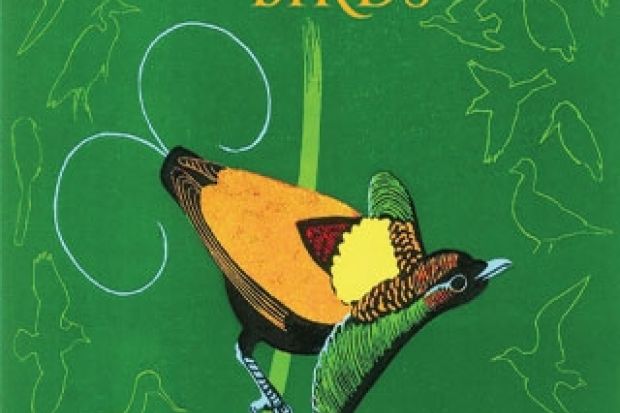Birds are not very representative of most of life. They are warm-blooded, diploid, reproduce sexually and tend their young, and compared with invertebrates, there are vanishingly few of them. Yet they are easily studied and, above all, we like them, which might account for why (as Ernst Mayr put it) birds give us “marvellous stepping-stones” to understanding evolution. For instance, ornithologists have been pivotal in revealing how new species form, and in arriving at the insight that natural selection acts on individuals rather than groups or species. So it is appropriate that Ten Thousand Birds uses ornithology as a path through a century and a half of biology since Darwin’s revolution, progressing from a (shotgun-based) fixation with description to a modern focus on biological processes. Variation, once considered a nuisance in the quest to box up the world, turns out to be key to understanding how evolution works.
Eleven chapters each cover a core topic in biology – from palaeontology and speciation to physiology and behaviour – and trace our increasing understanding as revealed by birds and birdwatchers. Progress has resulted from new ideas and new methods, such as DNA fingerprinting and GPS tracking, which have enabled dramatically new thinking even within most current PhD students’ lifetimes. Energetic and direct, each story is galvanised by the authors’ enthusiasm and expertise. They equally relish the ideas and the characters that populate them, and do not shrink from telling it how it is (on systematics: “the field seemed to attract some of the most arrogant, opinionated and downright nasty individuals who have ever called themselves scientists”). The book is as fascinating about the messy business of doing science as it is about the progression of ideas.
This human thread nicely puts across the “truth-for-now” nature of science and reminds us that our present understanding is not a collection of certainties, and much will be superseded, perhaps sooner than we expect. A beautiful book whose images alone are worth the price, Ten Thousand Birds also leaves us with some memorable signposts on this intellectual journey. Few readers will forget the debate over the evolutionary origins of feathers, illustrated as it is by a photo of a gleefully naked Baron Franz Nopcsa von Felsö-Szilvás strapped to an inflated goatskin, in preparation for crossing an Albanian river in search of relevant fossils. (He was wrong, it turns out, alas for him and the goat: feathers are not elaborated scales.)
Such messages are underlined by delightful autobiographical essays by leaders in each chapter’s subject, told (mostly) with appealing humility. A recurring theme is a childhood enchantment with birds, followed by a thrilling sense of the world simultaneously unfolding and falling into place with the discovery of evolution as an explanatory principle, and hypothesis testing as a razor-sharp tool to make their own contributions. A generation or sometimes three behind them, and trying to find a way to persist in a perhaps more complicated world, I found their foibles, missteps and admissions of serendipity as inspiring as their discoveries.
The personal passions for birds that underpin this book’s scientific stories are betrayed in an anecdote about a historic meeting between key opposing protagonists of the individual versus group selectionist debate of the 1960s, during a botanising trip in Scotland. David Lack disarmed Vero Wynne-Edwards early on by being first to spot a rare wryneck, and later defused a precarious moment with a sighting of nine dotterels. These triumphs may have eased their confrontation, but Lack’s ideas didn’t need the dotterels’ help. Wynne-Edwards’ group-selectionist ideas were profoundly wrong, while Lack’s insights were critical in bringing together ecology, evolution and behaviour, making him probably the book’s single most important figure.
This heady mix of ideas, discoveries and personalities left me feeling reinvigorated about my own small corner of the field. The book’s vast scope inevitably leaves the reader wanting more, which is of course the best way to be beguiled. After his distinguished career on the neurobiology of birdsong, essayist Fernando Nottebohm still feels much the same way: “If there is a God and God is a chaffinch, there will be hell to pay. But before then, I still have a few years to work on the origins of things.”
Ten Thousand Birds: Ornithology Since Darwin
By Tim Birkhead, Jo Wimpenny and Bob Montgomerie
Princeton University Press, 544pp, £29.95
ISBN 9780691151977 and 9781400848836
Published 26 February 2014
Register to continue
Why register?
- Registration is free and only takes a moment
- Once registered, you can read 3 articles a month
- Sign up for our newsletter
Subscribe
Or subscribe for unlimited access to:
- Unlimited access to news, views, insights & reviews
- Digital editions
- Digital access to THE’s university and college rankings analysis
Already registered or a current subscriber? Login





